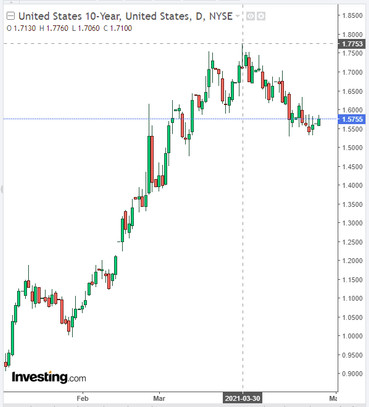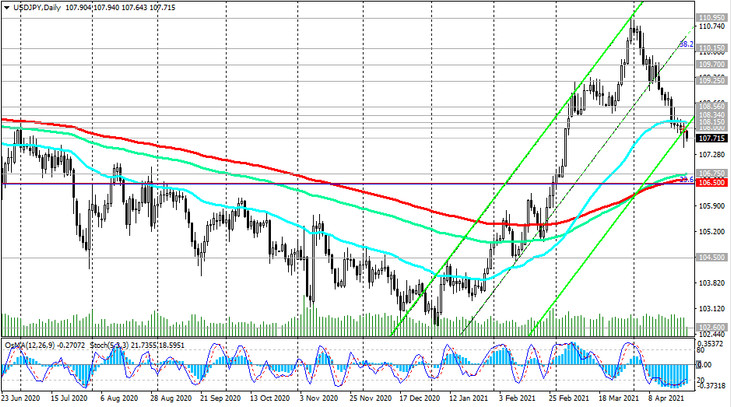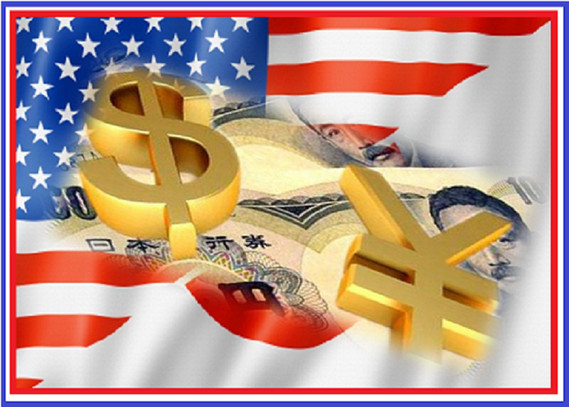Last Friday, the DXY dollar index ended with a decline for the third week in a row, and today, at the beginning of a new week, the DXY index is declining again. If the dollar continues to weaken, the DXY dollar index will refresh the previous month's lows at 90.63 and is likely to head towards this year's lows (at 89.17) and 2018 lows (at 88.15). At the start of today's European session, DXY futures are traded near 90.75, 8 pips below last Friday's close.
In total, the DXY dollar index has declined 2.7% since the beginning of this month, and there is no strong reason to believe that the weakening of the dollar has stopped yet. The Fed intends to maintain its current extra-soft monetary policy until at least the end of 2023, keeping interest rates near zero and pumping the market with cheap liquidity, and the White House is pursuing an aggressive trillions-dollars stimulus policy aimed at supporting the American labor market and the economy. These are strong negative factors for the dollar, accelerating real inflation in the United States. However, as follows from the minutes published on April 7 from the March meeting, the Fed leaders admit the possibility of inflation exceeding the target level of 2%.
"Participants felt that the current leading indication of the Committee (on open market operations) regarding the federal funds rate and asset purchases is beneficial to the economy", the minutes said. At the same time, the head of the Fed Jerome Powell said at a press conference after the March meeting that "the economic recovery is uneven and far from completion, and the path that still has to be done remains uncertain", making it clear that the Fed is still far from curtailing the stimulus policy.
"Monetary policy will continue to provide strong support to the economy until its recovery is complete", he said.
As of this writing, DXY dollar futures are traded near 90.75, while the dollar is losing support from continuing declines in US government bond yields. Thus, the yield on 10-year US bonds currently stands at 1.575% and maintains a downward trend that began at the end of last month after reaching a local multi-month maximum of 1.776%.

Thus, given the declining yields on US government bonds and the Fed's soft monetary policy, as well as accelerating inflation and growing federal debt amid a new package of fiscal stimulus measures worth $ 1.9 trillion, which acquired the status of law on March 11, we should expect further weakening of the dollar, which has recently practically ceased to react with growth to strong macro data coming from the United States.
The dollar is weakening against its main competitors in the foreign exchange market, including against the Japanese yen, while the number of people infected with coronavirus is growing in Asia. The number of new cases of COVID-19 in India, South Korea, Japan is growing rapidly, which increases the demand for the yen as a safe haven asset.
But the yen strengthened in the USD / JPY pair, primarily due to the total weakening of the dollar.
Market participants, meanwhile, are awaiting the outcome of the meeting of the Bank of Japan, which will take place on Tuesday. Its decision on the interest rate will be published at 03:00 (GMT), and at 06:00 a press conference will begin, during which the head of the Bank of Japan Kuroda will comment on the bank's monetary policy and the decision. Despite the measures taken earlier by the bank to stimulate the Japanese economy, inflation remains low, production and consumption are falling, which negatively affects export-oriented Japanese manufacturers. Markets tend to react noticeably to Kuroda's speeches, especially when he touches on the topic of monetary policy. The Bank of Japan is expected to keep its interest rate unchanged at -0.10% and support programs unchanged (in 2020, the Bank of Japan set an annual ETF purchase target of ¥ 12 trillion and expanded its virus-affected business aid program to ¥ 110 trillion yen from 75 trillion yen. Since February 2016, the Bank of Japan has kept the deposit rate at -0.1%). However, volatility during this period of time may sharply increase not only in the yen quotes and in the USD / JPY pair, but throughout the Asian and global financial markets, especially if Kuroda makes unexpected statements.
In the meantime, the downward dynamics of the USD / JPY pair remains, which at the time of publication of this article is traded near the mark of 107.70.






